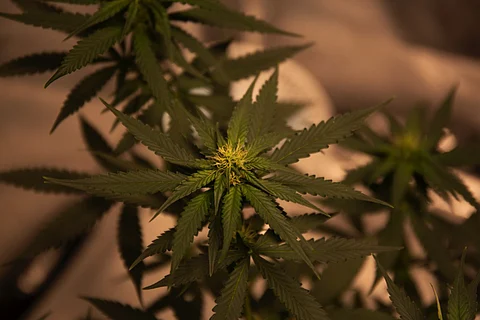

Amidst the drug case that has ensnared many in the film industry, including celebrities, headlines and reports have focused on several terms around the consumption and possession of cannabis in India, which remains illegal in the country. Investigations have centred around social media chats, which refer to substances such as hash and CBD, while well-known terms like weed are being discussed as well.
Here’s a quick intro to some of the more commonly-used terms:
Cannabidiol (CBD) is derived from the cannabis plant (Cannabis sativa), specifically the hemp plant. It is a cannabinoid, one of 113 identified cannabinoids in cannabis plants. CBD-containing products, such as oils and gums, are widely available around the world, including in the United States. (Recently, Martha Stewart launched a line of CBD products).
Unlike tetrahydrocannabinol (THC) — another naturally-occurring compound in the plant that causes intoxicating effects, typically associated with marijuana — CBD does not cause that same feeling. “While CBD is a component of marijuana (one of the hundreds), by itself, it does not cause a ‘high,’” according to a blog post by Harvard Medical School.
CBD is also associated with medicinal and health benefits, though there is still limited research on the subject. It has also been found to have some effect in the treatment of epilepsy. According to the World Health Organisation, “CBD exhibits no effects indicating any abuse or dependence potential.” Additionally, “CBD is generally well tolerated with a good safety profile. Reported adverse effects may be as a result of drug-drug interactions between CBD and patients’ existing medications”.
CBD is also used for the treatment of cancer in humans and pets.
THC or tetrahydrocannabinol is a cannabinoid found in cannabis, as well as the primary compound that causes the intoxicating effect created by consuming marijuana. The amount of THC varies depending on the cannabis derivative — for example, it has a lower concentration in marijuana than in hashish — which leads to varying levels of the ‘high’ sensation from each drug.
THC is said to have some of the same medical benefits that CBD offers, including pain relief, insomnia and anxiety.
Weed is a colloquial term, among many, used to refer to marijuana or ganja, a mixture made from the dried flowers and leaves of the cannabis plant. Marijuana’s intoxicating effect is caused by THC, a compound in the plant that leads to a ‘high’. THC is able to stimulate the release of dopamine into the bloodstream, which creates a ‘euphoric’ feeling.
The consumption, possession, transportation and sale of cannabis in the form of weed (that is, the flowers of the plant) is prohibited in India, and can carry sentences of rigorous imprisonment as well as fines. However, many countries have legalised marijuana, particularly for medicinal purposes.
Medical marijuana has been prescribed to help people for a variety of reasons, including to manage pain control, as a muscle relaxant and to manage nausea.
Hemp is a term that’s generally used to describe non-intoxicating cannabis grown primarily for industrial purposes and containing a low THC content. It is used for textiles, industrial materials etc.
Hashish or hash is prepared from the resin secreted from the flowering tops of the cannabis plant. Hashish has higher levels of THC than marijuana and is therefore considered far more potent than the latter. The drug can be smoked or consumed to create an intoxicating feeling. Unlike the dried texture of marijuana, it is a gummy, solid substance.
Hash oil or cannabis oil is another cannabis extract that can be smoked, vaped, rubbed on the skin or eaten. It is considered to be highly potent due to its high levels of THC.
Bhang is a popular cannabis preparation in India that is made from the leaves of the cannabis plant. Festivals such as Holi commonly involve consumption of bhang as well as ‘thandai’, a drink made using bhang (colloquially known as 'Shiv ji ka prasad' or 'Bhole ka prasad'). Bhang is also linked to the worship of Shiva in Hinduism.
While marijuana and hash are illegal in India, the sale and consumption of bhang are not prohibited. This is due to the definition of cannabis in the Narcotic Drugs and Psychotropic Substances Act of 1985, which prohibits the use of the flowers and resin of the cannabis plant but not the leaves and seeds, which is used to make bhang.
Additionally, section 14 of the Act makes a “special provision” for cannabis — the government could allow for the cultivation of a cannabis plant “for industrial purposes only of obtaining fibre or seed or for horticultural purposes”.